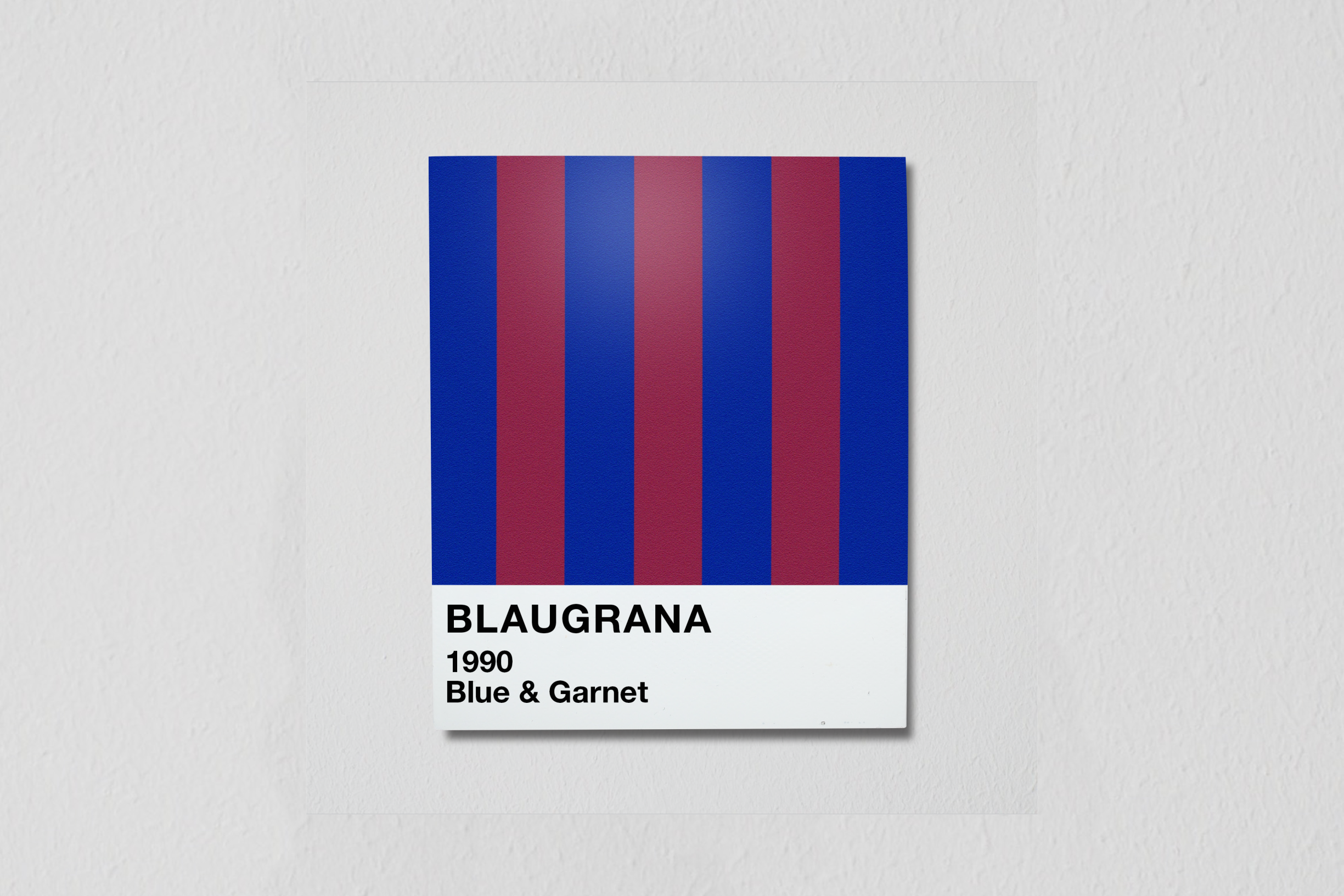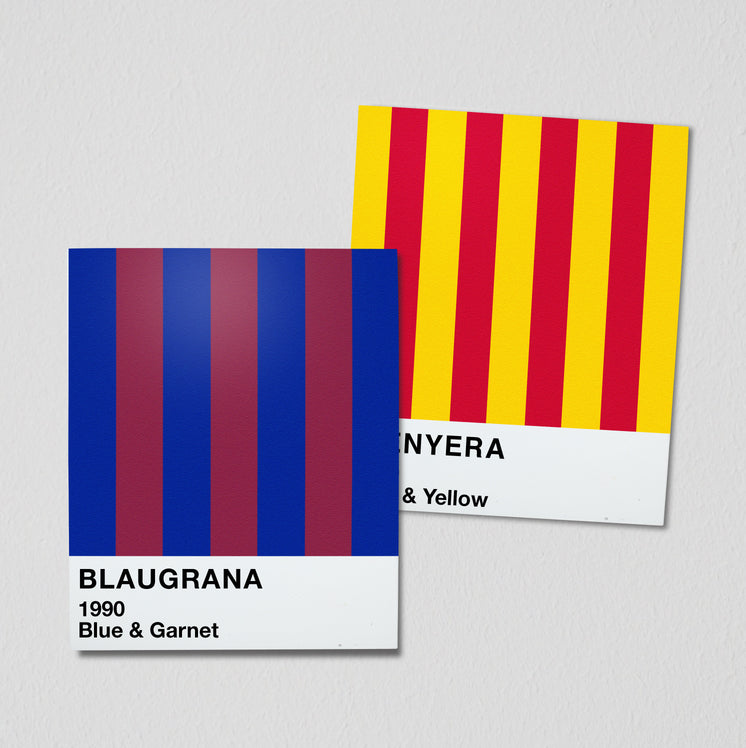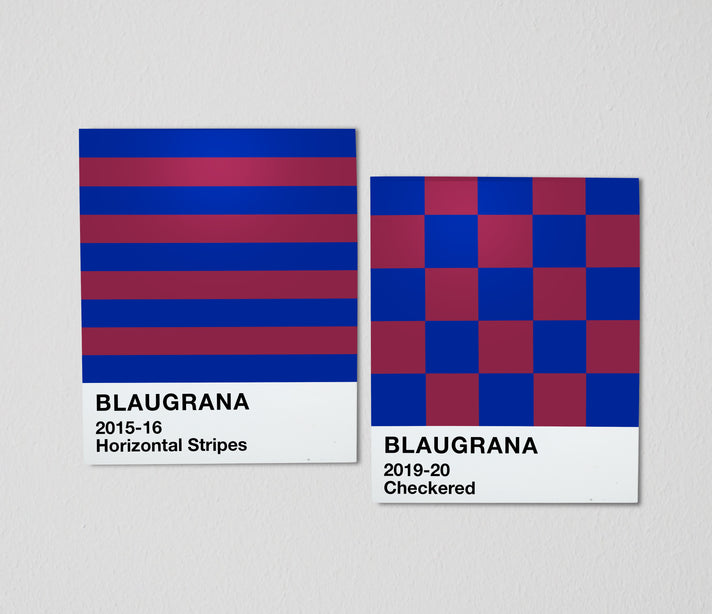
#Latest
Origins of FCB's Club Colors
FC Barcelona’s blaugrana colors - “blau” the Catalan word for blue, and “grana” the word for a deep red or garnet - contain a certain sanctity. They carry ancient success.
Fan Ink
Feb 24, 21
FC Barcelona’s blaugrana colors - “blau” the Catalan word for blue, and “grana” the word for a deep red or garnet - contain a certain sanctity. They carry ancient success. They’re not really football tones, but FC Barcelona is not a normal football club. They’re more philosophical. They abide by values, such as being owned and operated by fans. And with one of the most decorated trophy cabinets in the world, they’ve earned global reverence.
FC Barcelona’s blaugrana colors - “blau” the Catalan word for blue, and “grana” the word for a deep red or garnet - contain a certain sanctity. They carry ancient success. They’re not really football tones, but FC Barcelona is not a normal football club. They’re more philosophical. They abide by values, such as being owned and operated by fans. And with one of the most decorated trophy cabinets in the world, they’ve earned global reverence.



Historically, the team first donned the blaugrana in 1900, in a match versus Hispania (which they likely won). They’ve since applied them in a variety of designs - originally a shirt of two halves, most famously vertical stripes, then controversially horizontal stripes, and now the checkered arrangement the team wears today. However, besides the constitution of the colors, what’s perhaps most fascinating are the mysterious and conflicting theories behind their origin.
Historically, the team first donned the blaugrana in 1900, in a match versus Hispania (which they likely won). They’ve since applied them in a variety of designs - originally a shirt of two halves, most famously vertical stripes, then controversially horizontal stripes, and now the checkered arrangement the team wears today. However, besides the constitution of the colors, what’s perhaps most fascinating are the mysterious and conflicting theories behind their origin.
For instance, there’s the theory that they were chosen by club founder, Joan Gamper, who adopted them from either FC Basel - a Swiss club that he had a brief playing spell with; or FC Excelsior Zürich - which he earlier founded and led. Other more speculative theories advocate that the colors were inspired by the club’s accountants’ pens of the time having blue and red nibs, or that one of the team mother’s wanted to create a sash to identify the team before they had a uniform and only had blue and red fabric available at the time. Some propose that these colors were simply front-of-mind because of the French Revolution.
The club itself claims that it’s most likely the famous two-tone was born from founding fathers, Frederick Arthur Witty and Ernest Witty. The brothers studied at Merchant Taylors in Crosby, Liverpool, whose rugby team in the late nineteenth century wore blue and maroon. In a board meeting in December 1899, it’s believed that the brothers pitched those colors to the room, including Gamper who liked that it aligned with his Swiss counterparts, and the rest was history. In retrospect, this theory makes the most sense. The club’s decision-makers upon foundation were highly international, hailing from Germany, Switzerland, Catalonia, and the U.K. By embracing the rugby colors of a school in Liverpool, while nodding to Switzerland, in a Spanish league they could surely stand out.
However, the fact that the complete truth about Barcelona’s blaugrana origins isn’t fully agreed upon, despite being so widely recognized in world football, only adds to the air of intrigue surrounding the club who is, as their motto states "More than a club (Més que un club)”.
The club itself claims that it’s most likely the famous two-tone was born from founding fathers, Frederick Arthur Witty and Ernest Witty. The brothers studied at Merchant Taylors in Crosby, Liverpool, whose rugby team in the late nineteenth century wore blue and maroon. In a board meeting in December 1899, it’s believed that the brothers pitched those colors to the room, including Gamper who liked that it aligned with his Swiss counterparts, and the rest was history. In retrospect, this theory makes the most sense. The club’s decision-makers upon foundation were highly international, hailing from Germany, Switzerland, Catalonia, and the U.K. By embracing the rugby colors of a school in Liverpool, while nodding to Switzerland, in a Spanish league they could surely stand out.
However, the fact that the complete truth about Barcelona’s blaugrana origins isn’t fully agreed upon, despite being so widely recognized in world football, only adds to the air of intrigue surrounding the club who is, as their motto states "More than a club (Més que un club)”.
For instance, there’s the theory that they were chosen by club founder, Joan Gamper, who adopted them from either FC Basel - a Swiss club that he had a brief playing spell with; or FC Excelsior Zürich - which he earlier founded and led. Other more speculative theories advocate that the colors were inspired by the club’s accountants’ pens of the time having blue and red nibs, or that one of the team mother’s wanted to create a sash to identify the team before they had a uniform and only had blue and red fabric available at the time. Some propose that these colors were simply front-of-mind because of the French Revolution.
The club itself claims that it’s most likely the famous two-tone was born from founding fathers, Frederick Arthur Witty and Ernest Witty. The brothers studied at Merchant Taylors in Crosby, Liverpool, whose rugby team in the late nineteenth century wore blue and maroon. In a board meeting in December 1899, it’s believed that the brothers pitched those colors to the room, including Gamper who liked that it aligned with his Swiss counterparts, and the rest was history. In retrospect, this theory makes the most sense. The club’s decision-makers upon foundation were highly international, hailing from Germany, Switzerland, Catalonia, and the U.K. By embracing the rugby colors of a school in Liverpool, while nodding to Switzerland, in a Spanish league they could surely stand out.
However, the fact that the complete truth about Barcelona’s blaugrana origins isn’t fully agreed upon, despite being so widely recognized in world football, only adds to the air of intrigue surrounding the club who is, as their motto states "More than a club (Més que un club)”.
The club itself claims that it’s most likely the famous two-tone was born from founding fathers, Frederick Arthur Witty and Ernest Witty. The brothers studied at Merchant Taylors in Crosby, Liverpool, whose rugby team in the late nineteenth century wore blue and maroon. In a board meeting in December 1899, it’s believed that the brothers pitched those colors to the room, including Gamper who liked that it aligned with his Swiss counterparts, and the rest was history. In retrospect, this theory makes the most sense. The club’s decision-makers upon foundation were highly international, hailing from Germany, Switzerland, Catalonia, and the U.K. By embracing the rugby colors of a school in Liverpool, while nodding to Switzerland, in a Spanish league they could surely stand out.
However, the fact that the complete truth about Barcelona’s blaugrana origins isn’t fully agreed upon, despite being so widely recognized in world football, only adds to the air of intrigue surrounding the club who is, as their motto states "More than a club (Més que un club)”.

